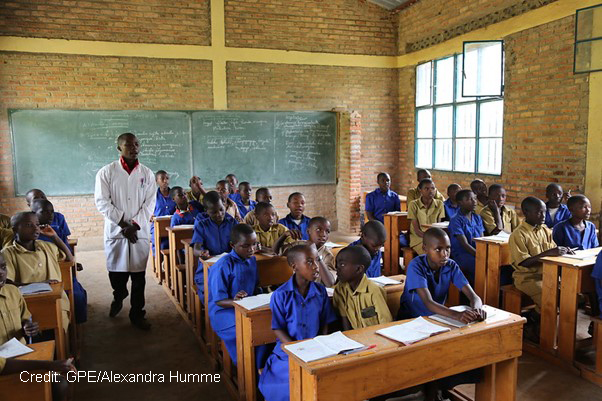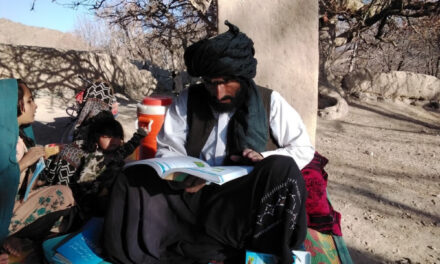This blog was written by Laterite and the Research for Equitable Access and Learning (REAL) Centre at the University of Cambridge. Both are learning partners for the Mastercard Foundation’s Leaders in Teaching initiative.
The Leaders in Teaching learning partnership, funded by the Mastercard Foundation, has just published a synthesis of ten research papers which highlight several key factors associated with teaching quality in secondary education in Rwanda. Drawing on the findings from these papers, this blog highlights five broad factors that are essential to consider in programming, research and policy decisions.
- There is a strong association between the type of school a student attends and teaching and learning outcomes
The better-resourced schools of excellence serve more advantaged populations: students at thes schools come from wealthier and more educated families and are likely to have repeated a grade fewer times.
Compared to other schools, schools of excellence perform better for almost all student and teaching quality measures. This better performance is associated with the fact that teachers in schools of excellence have more school resources and materials available to them to teach their students. Teachers also report more positive levels of satisfaction a higher level of overall motivation.
Smaller schools and those in rural areas have experienced the highest increases in enrolment, putting pressure on already-limited resources. Between 2017 and early 2020, enrolment in secondary schools in our sample increased by 26% overall. In small, mostly rural schools, this rate was 49%, as many more students were able to access secondary education.
- There are structural equity issues in the secondary education system
Gender gaps are present in numeracy assessment results: while girls outnumbered boys in lower secondary – there are 5 girls for every 4 boys – boys outperformed girls in numeracy assessments. Lower secondary school is the moment when the educational outcomes of girls start to worsen compared to boys. Before this point, girls perform better, with more girls making it to secondary school with higher pass rates at the national primary school leaving examination. Students who are older than expected for their grade, especially low performers or those with learning difficulties, are at the greatest risk of dropping out.
Fully understanding disadvantages faced in secondary school access and learning will require researchers, implementers and policy-makers to examine the multiple drivers more holistically, and consider the support that teachers need to tackle these in the classroom.
- Understanding teaching quality in the Rwandan context will help identify areas where support can be targeted
In our interviews with teachers, they highlighted several attributes – such as passion, punctuality, having cultural values, being a good role model and being motivated – as central to their understanding of what makes a good teacher.
Higher student outcomes are associated with head teachers allocating their time across a range of tasks, rather than focusing primarily on administrative and leadership functions. Rwandan secondary mathematics teachers demonstrated strengths in using their time effectively, promoting a supportive classroom environment, setting positive behavioural expectations and facilitating lessons. Based on the findings from our classroom observations, teachers might benefit from support in their feedback practices, the use of positive language in the classroom, and strategies to enhance students’ socioemotional skills.
- COVID-19 is having an impact on learning continuity for teachers
In April 2020, the Ministry of Education of Rwanda issued a response plan to the COVID-19 outbreak. School leaders and teachers have continued to engage in continuous professional development during school closures, but technology was a barrier to some accessing the provision. Efforts to ensure continuity to education during the pandemic have been inspiring, but ensuring equal access to IT and blended learning remains a challenge.
5.The structure of Rwanda’s education system is changing
In the short term, emerging evidence indicates that COVID-related school closures will lead to an increase in enrolment in key transition grades (Primary 1, Secondary 1 and Secondary 4), putting teaching and school resources under strain in those grades. In the long term, our simulations suggest there is likely to be increased student dropout and learning losses at the secondary level due to COVID-related school closures.
COVID-19 will affect the education system for some time, and it will be essential to continue to work on future-proofing education programmes and systems to meet these challenges. It is also essential to understand teachers’ perceptions of teaching quality and how they have been adapting to the ‘new normal’. This brings both opportunities and challenges to embrace for strengthening the quality of teaching.
See further information about the MasterCard Foundation-funded Leaders in Teaching initiative and a full list of resources on the REAL Centre website.





